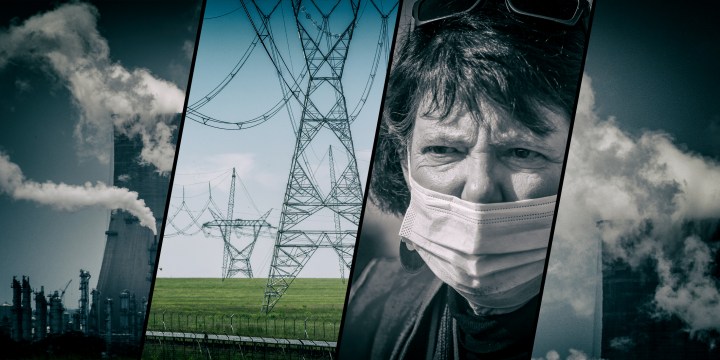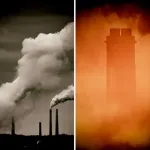LANDMARK CHALLENGE
Climate watchdogs ask court to halt new Eskom gas power plant in Richards Bay despite Barbara Creecy’s backing for project

As South Africans ponder the twin perils of the global climate crisis and Eskom’s unremitting power cuts crisis, two civil society groups are calling for the scrapping of a proposed 3,000MW gas power plant in the energy-intensive industrial port of Richards Bay.
In a landmark legal challenge starting in Pretoria on Tuesday, 2 August, two environmental justice groups are urging the high court to set aside the authorisation of a major gas-to-electricity power plant, largely on the basis that South Africa has run out of atmospheric space to keep pumping out climate-heating fossil fuel emissions.
In their court submissions, the South Durban Community Environmental Alliance (SDCEA) and groundWork say South Africa is one of the world’s top 20 greenhouse gas emitters and needs to do its fair share as a global citizen to curb soaring climate gas emissions.
Avena Jacklin, groundWork’s climate and energy justice campaigner, suggests: “Large-scale gas-to-power plants do not make sense. Growing evidence and research show that gas is not needed in our energy transition away from coal.
“Forcing in gas will displace renewable energy development, raise the cost of electricity, expose us to volatile gas prices and increased pollution, global warming and climate vulnerability. The burning of fossil fuels has no place in our energy future.”
Creecy backs gas plant
But Environmental Affairs Minister Barbara Creecy has signalled her strong support for the proposed gas plant in Richards Bay.
Defending the project as part of Eskom’s drive to reduce its carbon footprint by using gas as a “transition fuel”, Creecy declares in court papers that South Africa is an emerging economy that needs to “balance the competing need for continued economic growth with its social needs and the protection of the environment”.
Pointing to the unresolved Eskom power crisis, Creecy also backpedals from an ambitious renewable energy pathway, declaring that “an irresponsible and sudden migration to renewables may hold prejudicial consequences for the stability of the electricity grid”.
She states that the court should not intrude into energy decisions taken by government officials with “special expertise and experience in this field”.
SDCEA and groundWork, however, argue that the government accepts that climate change is “a measurable reality” and that South Africa is especially vulnerable to its impacts.
The government’s own policy documents had acknowledged that without ambitious emission reductions, temperatures in the South African interior were expected to rise by between 5°C and 8°C by the end of the century and that rainfall patterns would also become more variable and unpredictable.
In a white paper published in 2011, the government said current analyses indicated that South Africa’s greenhouse gas emissions could rise fourfold by 2050 if no action was taken to decarbonise.
KZN floods
In a media statement ahead of the court challenge, SDCEA coordinator Desmond D’Sa said the recent devastating floods in KwaZulu-Natal were a clear reminder of the risks of failing to curb climate-heating greenhouse gas emissions.
The Richards Bay plant was “neither timely nor economically optimal”
Though the national energy department has been punting gas as a “transition fuel” cleaner than coal, D’Sa points to expert testimony by Dr Robert Howarth of Cornell University in the US that greenhouse emissions from gas are greater than those from coal per unit of energy produced.
“Methane has a much higher impact on global warming than an equivalent amount of carbon dioxide: 86 times the impact on a 20-year time scale, which is the time scale most relevant for preventing runaway warming,” D’Sa says in court papers.
The proposed Eskom combined cycle power plant, to be built adjacent to the Mondi paper mill in Richards Bay, was expected to emit 4.6 million tonnes of Co2e per year, translating into hundreds of millions of tonnes of carbon pollution over the gas plant’s expected 30-year life cycle.
Read in Daily Maverick: Why the global methane pledge is a big deal for the climate
The new Richards Bay gas plant, alone, was expected to generate between 0.87% and 1.7% of national greenhouse gas emissions — a significant percentage of national emissions.
D’Sa also argues that the plant’s climate change impact study had not included a full life-cycle analysis of emissions (including extraction, leakage and transportation to Richards Bay).
The two groups say the exact source of the gas remained unclear, with indications that it could either come from Mozambique’s Rovuma Basin near the Tanzania border or possibly from shale gas fracked from the Karoo interior.
They also argue that Eskom failed to consider renewable energy options as an alternative to gas. Elsewhere in the world, the US state of Colorado was planning to retire its two largest coal-fired power plants and replace them with a combination of solar, wind and battery storage projects.
D’Sa said studies in the US, as well as a local study by Meridian Economics and the CSIR, confirmed that the Richards Bay plant was “neither timely nor economically optimal” and that South Africa would be better served by investing in a 21st-century electricity system consisting largely of renewable energy options.
Renewable options
Expert evidence to support this view would be presented of a more recent switch to renewable energy options in India, Morocco, Chile, several US states and parts of South Australia.
D’Sa raises concern that the Eskom gas plant plan is one of several similar proposals for the port of Richards Bay — which currently consumes nearly 8% of all power generated in South Africa due to several energy-intensive industries around this harbour city.
Creecy, however, has challenged the accuracy of some of these objections. In her founding papers, the minister argues that gas emits only half as much carbon dioxide as coal-fired power plants.
Creecy says South Africa should transition “cautiously” towards renewable energy as it does not have a well-interconnected energy system.
“South Africa needs to grow its energy supply to support economic expansion … the activity applied for by Eskom therefore stands central to policy decisions taken by the government of the Republic of South Africa and is informed by ongoing strategic planning undertaken by the Department of Energy.
“The applicants’ case is centred on the premise that gas-to-power technology should not be used but that only renewable energy sources should be used. This is impermissible because government took a policy decision regarding the energy mix to generate electricity. It is not for the applicants to choose.”

Minister of Forestries, Fisheries and the Environment Barbara Creecy at the 9th People and Parks Conference at the Sandton Convention Centre, 31 March 2022. (Photo: Julia Evans)
She also raises a legal objection, arguing that the uMhlathuze Municipality had not been joined as a respondent, despite the fact that it has a significant interest as one of the most energy-intensive cities in the country.
The new plant, with a construction period of 36 to 48 months, was expected to create 90 permanent jobs and up to 500 temporary jobs and provide a major new generation centre for a port city currently reliant on coal power stations nearly 500km away.
‘Caution’
Creecy suggests that a rapid switch to renewable energy in South Africa should be considered with more caution. Europe, for example, still relied on natural gas for nearly one-fifth of its electricity generation, while South Australia had experienced several blackouts over the past five years due to a recent reliance on wind power.
Referring to a report submitted to Eskom by Afri Futuretech, Creecy says South Africa should transition “cautiously” towards renewable energy as it does not have a well-interconnected energy system.
Large-scale battery storage is only expected to be suitable for wide use around 2040, she suggests.
Pointing to the shortcomings of this technology, she states that the biggest battery storage facility in the world (in the US) shut down twice — in September 2021 and October 2022 — due to overheating batteries.
Where a similar-sized solar photovoltaic plant would require 1,200 hectares of land, the Richards Bay gas plant would only require 11 hectares.
“To set aside the [Eskom plan] will have grave consequences for electricity generation in South Africa, but also for the overall socioeconomic climate. Without proper supply of electricity, the economy of South Africa simply cannot grow to provide more employment opportunities.”
She challenges D’Sa’s argument that gas-fired power plants will add to climate change emissions, stating that several of these projects — including the controversial Karpowership floating gas power ships plan — had not been approved.
“The statements relied upon by the applicants should also be seen in the proper context: namely that an irresponsible and sudden migration to renewables may hold prejudicial consequences for the stability of the electricity grid,” the national environment minister suggests.
The case is scheduled to be heard by Judge Anthony Millar over two days, on 2 and 3 August. DM/OBP




















 Become an Insider
Become an Insider
Barbara Creecy is rapidly becoming Gwede Mantashe’s favourite cheerleader and as effective a guardian of the environment as agent orange.
Eskom, plagued as it is by sabotage and corruption, should not run such a plant.
But according to the EPA, “natural gas units have an average emission rate of 898 pounds CO2 per megawatt-hour (MWh), while coal units have an emissions rate of 2,180 pounds CO2 per MWh”. So there is absolutely no doubt that Minister Creecy is correct that gas is a much cleaner source of power than coal.
Moreover, the power from gas power plants can be ramped up and down much more easily than that of coal, and so can support the transition to clean solar and wind power.